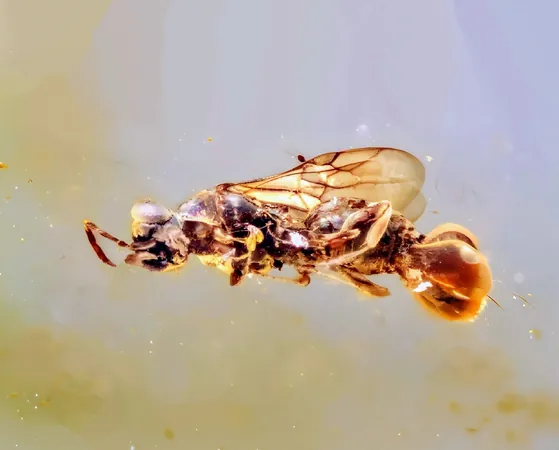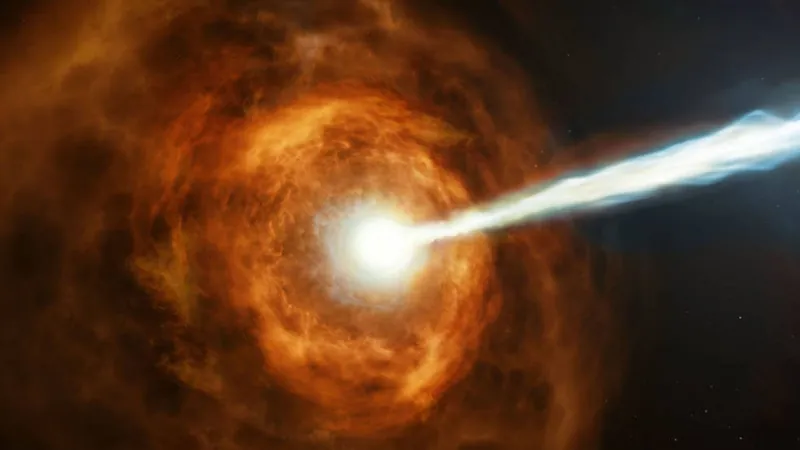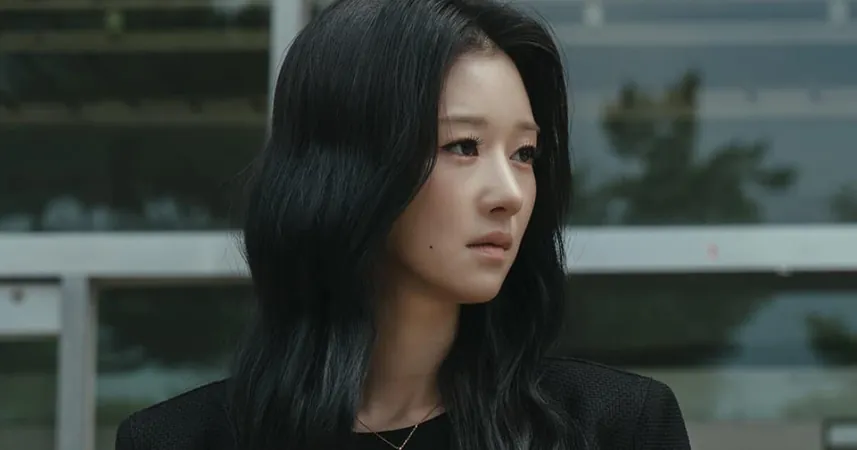
Ancient Parasitic Wasp Unearthed with a Bizarre 'Flytrap' for Capturing Prey!
2025-04-04
Author: John Tan
A recent discovery has unveiled a remarkable species of parasitic wasp that coexisted with dinosaurs nearly 100 million years ago. This extraordinary insect, named Sirenobethylus charybdis, exhibits a unique anatomical adaptation reminiscent of a Venus flytrap, allowing it to ensnare unsuspecting prey and use them as living incubators for its offspring.
The captivating findings were made from 16 exquisitely preserved specimens trapped in Cretaceous-period amber found in Myanmar’s Kachin region. Researchers, led by Lars Vilhelmsen from the Natural History Museum of Denmark, were initially puzzled by a peculiar expansion found at the tip of the wasp's abdomen. Initially mistaken for an air bubble, it soon became clear that this structure was an integral part of the insect's anatomy, specifically designed for grasping smaller insects.
“This was actually part of the animal,” Vilhelmsen remarked after further examination of multiple specimens. What sets this wasp apart is not just its fascinating structure, but also its unknown function, as researchers noted that this appendage was mobile, capable of opening and closing — mimicking the signature action of a predator’s trap.
Remarkably, the physical traits of S. charybdis showed no directly related counterparts in today's insect world. The researchers even had to look beyond insects to find a similar mechanism in the plant world. “We had to go all the way out of the animal kingdom into the plant kingdom to find something that remotely resembled this,” Vilhelmsen said.
The team hypothesizes that rather than being a deadly weapon, this odd appendage was utilized to temporarily seize other insects long enough to deposit its eggs within them. The unsuspecting hosts would then unwittingly carry the larvae as they developed inside, ultimately leading to the caterwauling fate of the host insects. According to Vilhelmsen, the wasp likely preyed upon flying insects of a comparable size, ingeniously ensuring its offspring had a direct food source.
The ancient wasp's reproductive techniques bear striking similarities to modern-day parasitoid wasps, such as cuckoo wasps, which similarly lay eggs in the nests of other species. However, the evolutionary trajectory of the Sirenobethylus charybdis, as evidenced by its unique abdominal appendage, raises intriguing questions about the diversity of parasitic behavior in ancient ecosystems.
While amber has provided a remarkable window into this prehistoric world, the use of Myanmar amber has sparked ethical debates due to ongoing political instability and concerns over the trade's implications. Some paleontologists argue that further studies of these specimens should be halted until ethical concerns are addressed.
The significance of this discovery goes beyond mere academic curiosity. Phil Barden, a renowned entomologist, describes S. charybdis as a “Cretaceous weirdo,” pointing out the unexpected diversity that still lurks within the fossil record, despite the existence of around a million known insect species. "There are still lots of unexpected surprises in the fossil record that are beyond imagination," Barden remarked.
As scientists delve deeper into the mysteries of this strange wasp, they continue to ponder its purpose, especially given that all known specimens are female. While the intriguing structure hints at reproductive significance, it raises other possibilities for its function, such as assisting in copulation or sensing prey.
“It's a unique find, something I never expected to see, and something I couldn’t even imagine would be found,” Vilhelmsen expressed. With ongoing research into ancient ecosystems, the discovery of the Sirenobethylus charybdis not only excites our imagination but also compels us to reassess our understanding of evolution and the natural world throughout history.
The findings of this study have been published in **BMC Biology**, and as paleontologists continue their work, the wonders of a bygone era like no other shall keep unfolding, offering us a glimpse into the intricate dance of life that once thrived alongside the dinosaurs.



 Brasil (PT)
Brasil (PT)
 Canada (EN)
Canada (EN)
 Chile (ES)
Chile (ES)
 Česko (CS)
Česko (CS)
 대한민국 (KO)
대한민국 (KO)
 España (ES)
España (ES)
 France (FR)
France (FR)
 Hong Kong (EN)
Hong Kong (EN)
 Italia (IT)
Italia (IT)
 日本 (JA)
日本 (JA)
 Magyarország (HU)
Magyarország (HU)
 Norge (NO)
Norge (NO)
 Polska (PL)
Polska (PL)
 Schweiz (DE)
Schweiz (DE)
 Singapore (EN)
Singapore (EN)
 Sverige (SV)
Sverige (SV)
 Suomi (FI)
Suomi (FI)
 Türkiye (TR)
Türkiye (TR)
 الإمارات العربية المتحدة (AR)
الإمارات العربية المتحدة (AR)